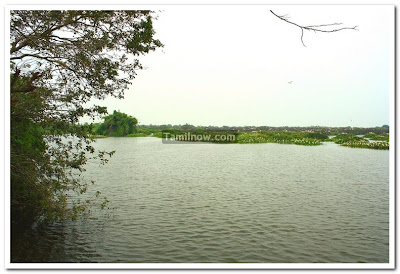Vedanthankal Lake Bird Sanctuary is a 30 ha (70-acre) sanctuary located in the Kancheepuram District of Tamil Nadu. Vedanthangal is a home for migratory birds, such as pintail, garganey, grey wagtail, blue-winged teal, common sandpiper and some more. It is one of the oldest water bird sanctuaries in the country. Vedanthangal in Tamil language means ‘hamlet of the hunter’. This area was a favourite hunting spot for the local landlords 300 years ago.
The region attracted a variety of birds because it was dotted with small lakes that acted as feeding grounds for the birds. Realising its ornithological importance, the British government undertook steps to develop Vedanthangal into a bird sanctuary as early as 1798. Villagers near this sanctuary are very concerned about the Sanctuary and the birds coming to this sanctuary, and they have taken many serious steps to avoid disturbance to the flow of birds.
Vedanthangal Bird Sanctuary is situated 86 km from Chennai . It is the oldest Bird Sanctuary in India . The sanctuary is spread over 30 hectares of land .The area is covered by the lake that makes up an ideal habitat for birds .In the lake there are thousands of small trees on which the birds build their nests .
Birds from far off places like Canada , Siberia , Australia and other countries like Sri Lanka , Burma , Bangladesh visit this sanctuary . The winged visitors include Teats , Terns , Ibis , Pelicans , Herons , Spoon Bills , Egrets , Flat Bills , Storks , Ducks , Snake Bird , Cormorants , sandpiper , Darter , Grebes , Moorhen , Paddy Bird , Pintails , Stilts , etc . They are seen migrating to this sanctuary year after year to avoid the biting cold in their habitats .
Birds from far off places like Canada , Siberia , Australia and other countries like Sri Lanka , Burma , Bangladesh visit this sanctuary . The winged visitors include Teats , Terns , Ibis , Pelicans , Herons , Spoon Bills , Egrets , Flat Bills , Storks , Ducks , Snake Bird , Cormorants , sandpiper , Darter , Grebes , Moorhen , Paddy Bird , Pintails , Stilts , etc . They are seen migrating to this sanctuary year after year to avoid the biting cold in their habitats .
Birds of myriads of colours and all kinds descend on the trees in hordes . They build their nests in the trees and lay eggs . The eggs hatch and young ones come out . The chicks are voracious eaters . The parent birds bring back food in their beaks As they land in their nests , the little impatient chicks start clamouring for food . They insert their tiny beaks into the mouths of their parents and try to snatch whatever they could . When the chicks grow , the parents teach them to fly and to swim . It is a sight to be seen ; it cannot be described in words .
The birds eat fish , tadpoles , crabs , water insects , snails , etc , which is in plenty in the lake and in the neighbouring fields .
There is a lot of noise --different kinds of birds chirping . Birds are seen to flap around... singly or in groups . Some dive down into the water and come up with fish . This is a lesson in diving . It is difficult to believe that there can be so many different kinds of birds in one place at a time . For a few hours , peace and tranquility takes over and we forget the world inspite of the chirping of the birds .
When the sun dips down in the western horizon, the sky turns soft-red. The tropical dust wraps up the entire vista. Thousands of birds are seen returning to their nests in flocks for the night.
When summer sets in March, the water in the lake stats receding. By this time, the chicks become old and strong enough to fly. The birds start leaving in batches.
The best time to visit the sanctuary is between November and February. Bird watching is best early morning when the birds go out in search of food and between 3.00 & 6.00 in the evening, when the birds return home.
For over hundreds of years the villagers around have zealously protected the winged visitors in the sanctuary. They know that the droppings of the birds make one of the finest natural fertilizers known to mankind. The birds devour a lot of insects, pests, rodents that would otherwise create havoc to the nearby crops. The villagers recognize the symbiotic beneficial relationship with the birds.
This place is a MUST in the itinerary of the places you like to visit in Tamil Nadu. Come to Chennai during Nov - Feb to see the birds. It is a Paradise for Bird-watchers.



























No comments:
Post a Comment